
views
iPod Composite AV Cable
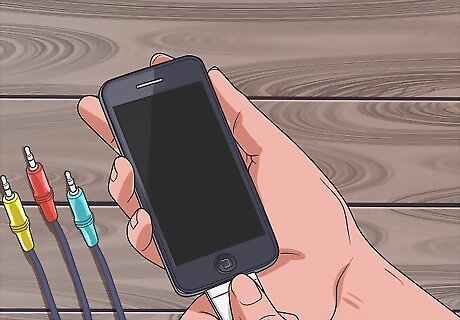
Plug the small end of the cord into the iPod. Look at the very bottom of the iPod. There should be a port that you usually use when plugging the device into its charger. The smaller end of your iPod to AV cable should have a component that connects to this port. Plug the cable into the iPod to continue. The cable you use will usually need to be the Apple Composite AV cable, part number MB129LL. It is compatible with all version of the iPod. On the other hand, the iPod AV cable, part number M9765G, is only compatible with the iPod 5th generation and the iPod Photo. If you do happen to have an iPod AV cable instead of the composite version, you will need to plug the iPod end of the cable into the headphone jack.
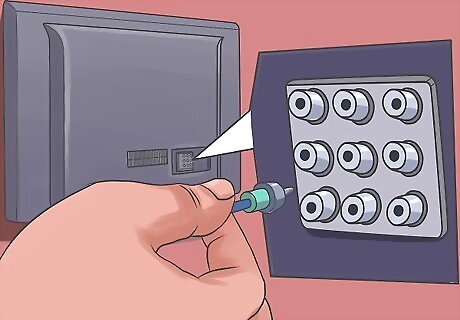
Connect the RCA ports into the TV. Locate the red, white, and yellow composite ports on your television. The other end of your cable should have two audio and one video plug, which are also red, white, and yellow. Plug the color-coded components on this cord into the corresponding color ports of your television set. If you have a VCR or other device currently occupying the AV composite ports on your television set, you may need to plug this cable into the video-in and audio-in ports on the front of your VCR instead of plugging them directly into the TV.
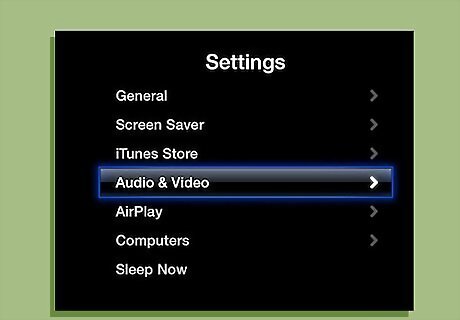
Switch your TV to the correct source. The precise method you will need to follow will vary based on your television set. You might need to switch to a certain channel—usually channel 2, 3, or 4—or you might need to press the "Source" or "Input" button on your remote control until you find an input labeled as "Video" or something similar. For additional guidance, consult your television's instruction manual.
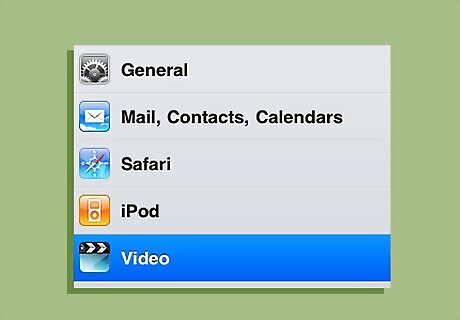
Navigate to the video settings. Find your way to the "Video Settings" menu of your iPod. If you are not already on the main menu, get there by pressing the "Home" button, for iPod Touch, or by pressing the center click wheel for a standard iPod until you reach the main menu. From the main menu, swipe across or scroll down until you see "Video." Tap on the option if you have an iPod Touch, or press the center click wheel if you have a standard iPod. From the broader "Video" menu, swipe or scroll until you find the "Video Settings" option. Select it with a tap or a center click.

Select "TV Out." The "TV Out" option should be located near the top of the "Video Settings" menu. Tap on it if you have an iPod Touch or highlight it and press the center of the click wheel of you have a standard iPod. The word "On" should appear. If not, there should be another indication that the "TV Out" option has been activated. Note that you should see the iPod screen mirrored on your TV screen as soon as you complete this step. If it does not work, check your connection on both ends of the cable and verify that your TV set is on the correct source or channel.
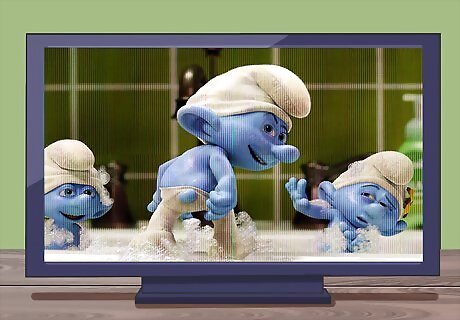
Watch your video. Find the video you want to play by scrolling through your iPod menu as usual. Select it, then watch it play on your TV screen. Using this method, your video should appear on the TV at a resolution of 480i. This is far from being high definition, but it is almost as good as standard DVD quality.
iPod Dock or Adapter
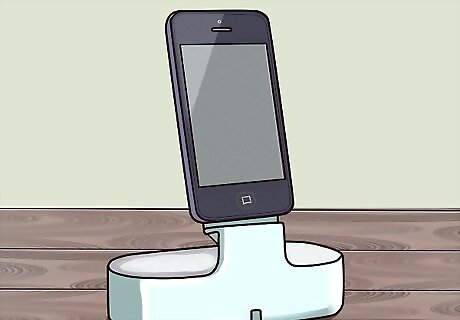
Connect the dock or adapter to your iPod. If you are using a dock, you will connect your iPod simply by sliding the bottom port into the appropriate slot. The bottom port of the iPod should slide directly into the charging component of the dock stand. If you are using an adapter, you will need to plug the charger end of the cord into the same charging port at the bottom of the device. Make sure that you have the correct dock or adapter for your device. Both the iPod Universal dock and Apple Universal dock should work with your iPod. If you use a digital AV adapter, you will need to use Apple's 30-pin digital AV adapter. You will not be able to use the lightening adapter since it is not compatible with the iPod.
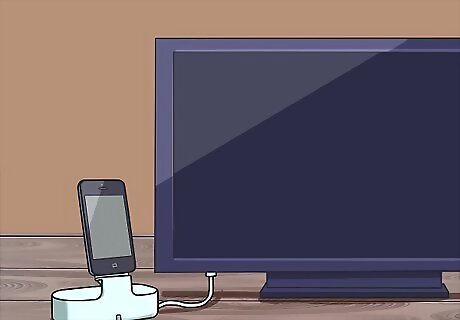
Connect the dock or adapter to the TV. The exact ports you will need to use will vary depending on your choice of adapter or dock. Regardless, you will need to find the right cable and hook it up to both the dock/adapter and TV set. If you use a dock, use the Apple Universal dock with an Apple Composite AV cable and an iPod Universal dock with an iPod AV cable or an S-Video cable. When using an Apple Composite AV cable, plug video-in and audio-in components to the TV and the video-out and audio-out components to the dock. The same applies to the iPod AV cable. When using the S-Video cable, you will need to locate the Line-In and Line-Out ports on your dock and TV. These ports are circular and have rows of pins in them. The S-Video cable should have corresponding components on either end that can fit into these ports on the TV and dock. For the adapter, you will need to find a plug that can connect the rectangular 30-pin port of the adapter to the corresponding port on your television. Note that the digital AV adapter and iPod Universal dock with an S-Video cable can both improve the quality of your video, with the former being better than the latter. The other dock connections will only achieve a video resolution of 480i, however.
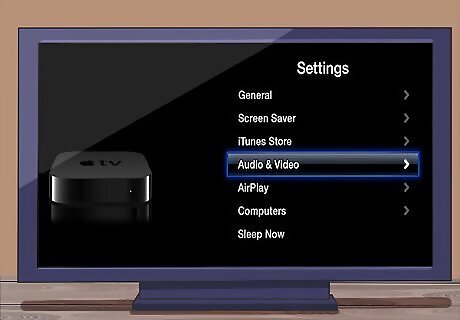
Switch your TV to the correct source. The method you use will vary depending on your TV set. Check the instruction manual for further assistance. You may need to switch to a certain channel to change the input, especially if you have an older TV. Usually, it will be channel 2, 3, or 4. For newer TV models, you will usually need to press a "Source" or "Input" button and switch to the appropriate video input that way.

Change the video settings on your iPod. Navigate to the video settings on your iPod and select the "TV Out" option to turn it on. From the home screen or main menu, navigate and select the "Video" menu. Within the "Video" menu, find and select "Video Settings." Locate the "TV Out" option. Select it to link your iPod screen to the TV. When it works, the word "On" should appear by the "TV Out" option.
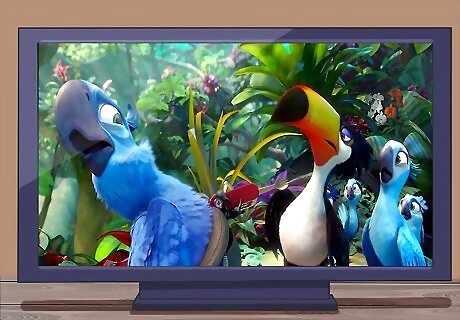
Watch your video. Select your video as usual from the content on your iPod. It should play on both the iPod device and the TV.
AirPlay via Apple TV
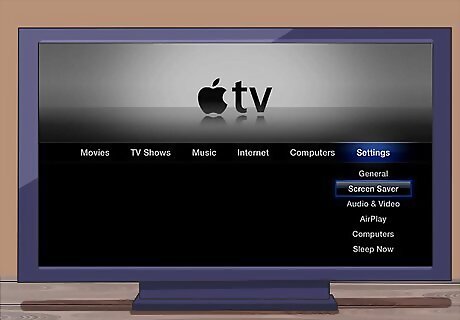
Use an Apple TV. The Apple TV is the most affordable way to use AirPlay. This device usually costs around $99. If you have AirPlay enabled speakers, Apple AirPort, or receivers that are labeled as being AirPlay compatible, you can skip the Apple TV and use one of these device, instead. Since they are all more expensive, though, Apple TV is your best option if you are starting from scratch. Note that you will also need an iPod that is running iOS 4.2 or above, as well as a reliable wireless network.
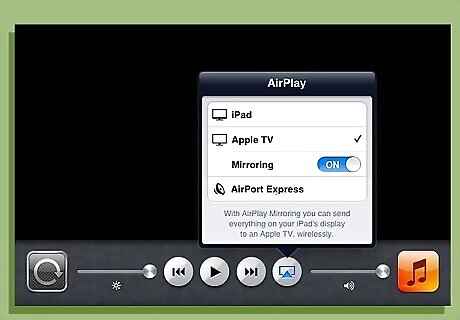
Set up AirPlay on the TV. Connect the Apple TV to your wireless network. Verify that AirPlay is turned on by going to the Settings menu and selecting the AirPlay on your Apple TV option. When you connect the Apple TV box to your TV for the first time, it should automatically take you through a series of on-screen instructions. When asked, select your home wireless network from the list of available networks and enter the correct password, if your wireless network uses one.

Connect your iPod to the same wireless network. Make sure that your iPod is connected to the same wireless network that your Apple TV is currently on. Choose "Settings" from the main screen or home screen of your iPod device. Scroll down to the "Wi-Fi" option and select it. Turn on Wi-Fi, and scroll through the list of available wireless networks until you find yours. Highlight your network and hit the "Choose Network" option to select it. When prompted, enter the network password, if applicable.

Launch a video on your iPod and send it to the Apple TV. Navigate to your saved videos on the iPod as you usually do. Select a video, then hit the "Play" option. An AirPlay icon should show up when you do this. Click on it and select "Apple TV" from the options. Your video should begin streaming on your TV as soon as you complete this step.














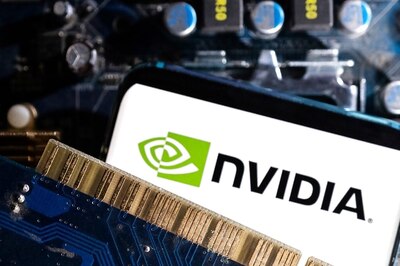

Comments
0 comment